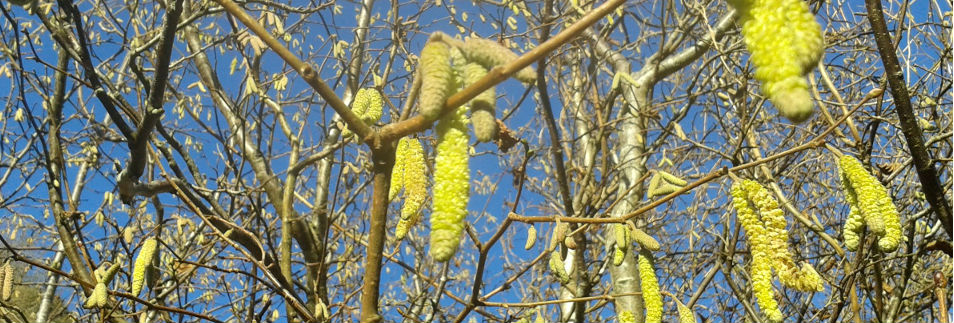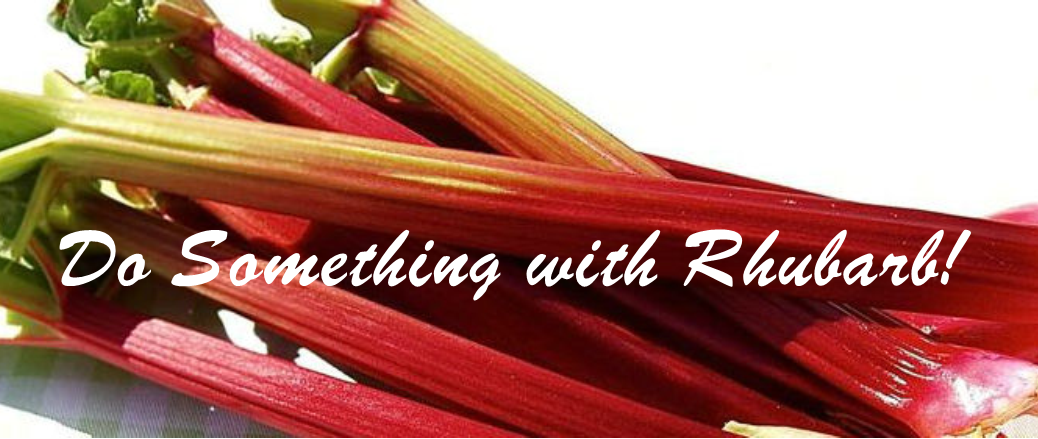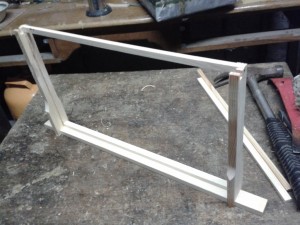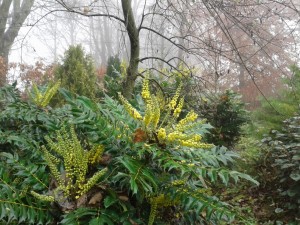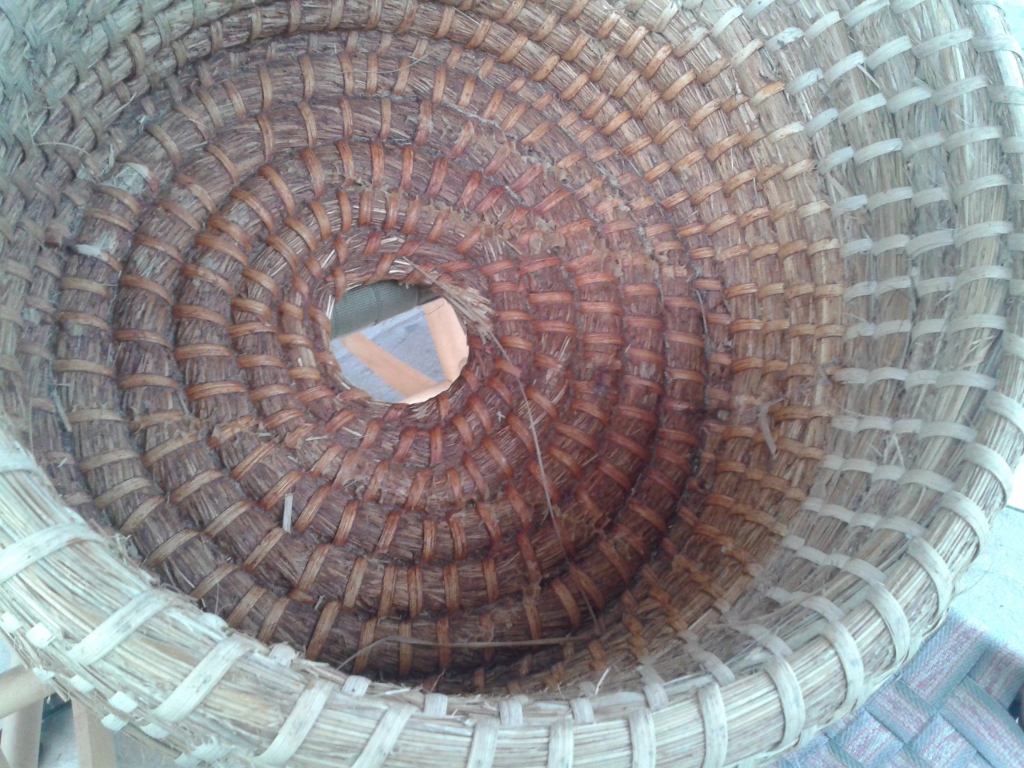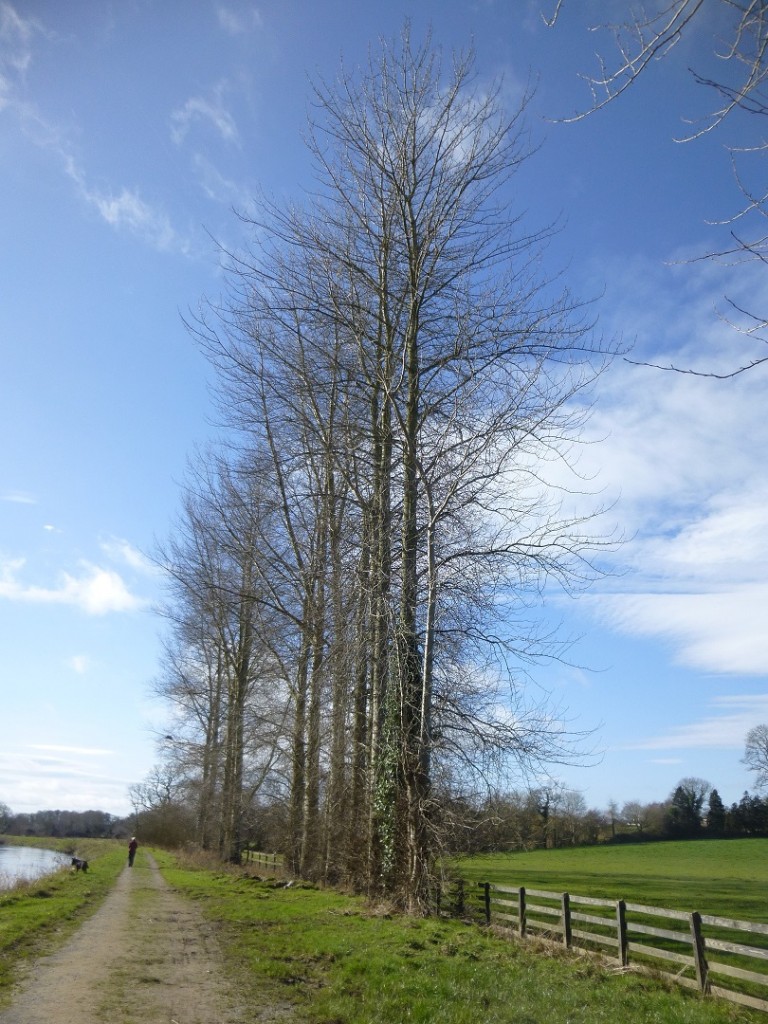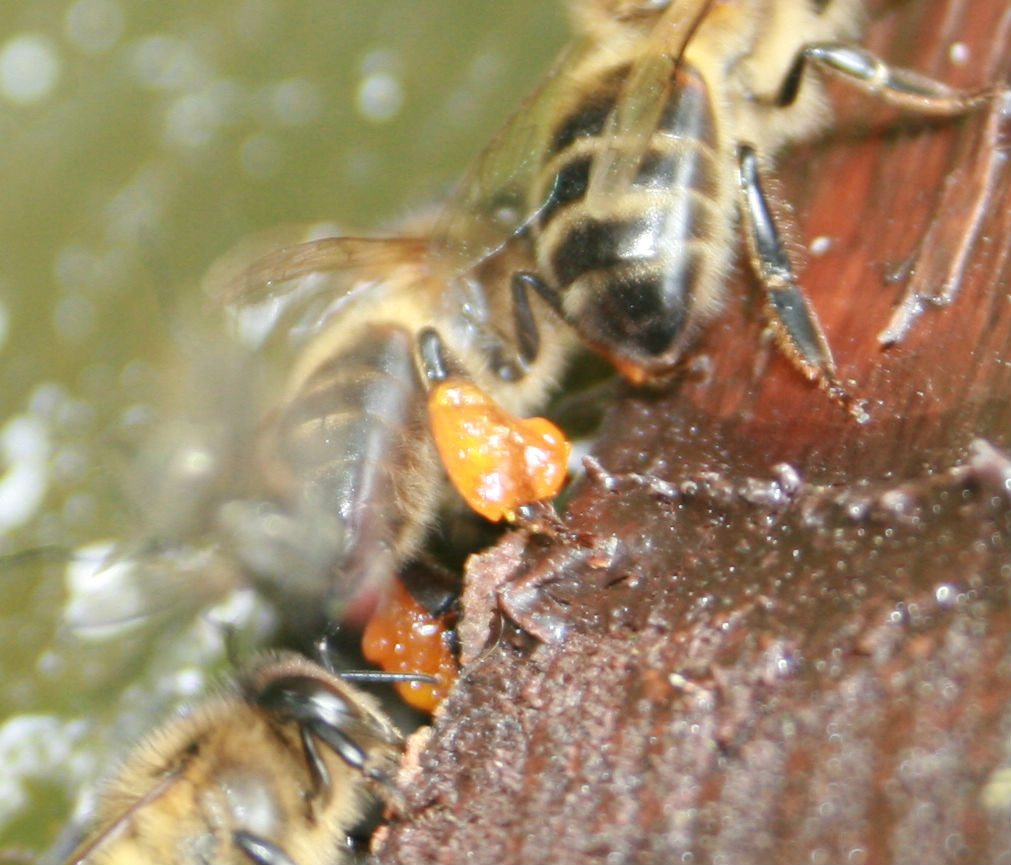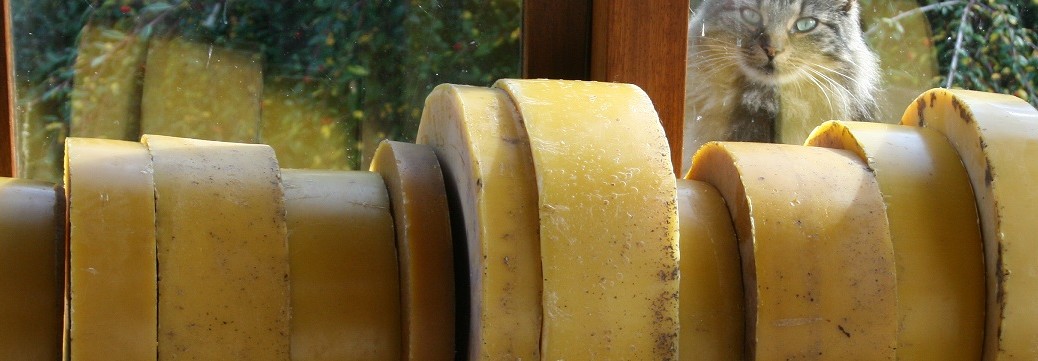Honey bees are social insects which means they are unable to survive as individuals – instead they live together in colonies.
Each colony is made up of three types of bee or ‘castes’:
- One queen bee;
- Up to 50-60 thousand worker bees in summer or 10 thousand in winter;
- Up to one thousand drones. Generally there are no drones in the colony in the winter as they are evicted in August.
- The queen bee is a fertile female. She lays all the eggs and is the mother of the colony. She also secretes pheromones or messenger chemicals which contribute to the social cohesion of the colony.
- The worker bees are infertile females. They do all the work in the colony.
- The drones are males. They don’t do any work. Their job is to mate with a new queen after which – they die. Otherwise they are evicted from the colony at the end of summer.
The colony consists of honeycombs made of beeswax and suspended in a hollow tree, chimbley, roof space or similar in the wild. Otherwise the honeycombs are contained in moveable wooden frames inside a beehive. Honeycomb is a system of hexaganol cells made of beeswax. The wax is secreted by the worker bees, processed and moulded into position, then strengthened and varnished with propolis.
Generally honey is stored in an arc at the top of the frame, then there is an arc of pollen, in the centre is the area where the queen lays eggs and the larvae, or ‘brood’, are reared.
The Brood
The queen produces two sorts of egg, fertilised and unfertilised. Fertilised eggs become workers and unfertilised eggs become drones. Worker eggs are laid in worker cells and drone eggs are laid in the larger drone cells. The mechanism by which she decides whether or not to fertilise the egg with a little squirt of the stored sperm is unknown but it is thought that she can gauge the size of the cell with her forelegs and acts accordingly.
Larvae hatch from eggs after 3 days and they are fed ‘brood-food’ by workers. On the 8th day, the cells of worker brood are sealed and the larvae pupate for a further 10 days during which metamorphosis occurs after which the pupa moults and the young worker bee hatches on the 21st day after the egg is laid. The drone takes rather longer and doesn’t hatch until the 24th day
When the colony is ready to reproduce, or when the old queen needs to be replaced, especially large cells, queencells, are made by the workers and she lays fertilised eggs into them. Queen cells hatch and new queens emerge after a mere 16 days.
Swarming
If the colony is strong and well in itself the bees will probably decide to swarm. In this case several to many queencells will be raised – usually along the bottoms, edges or top bars of the frames. When the first cell hatches and the virgin emerges, half the flying bees will leave the colony with the old queen. If the weather is good and the colony is still strong even after the first, or prime, swarm has left – other smaller swarms, or casts, may continue to leave – each with a newly hatched virgin queen. In some cases they will continue to swarm out until there are no bees left!
Swarms hang up in a cluster on a nearby tree, shrub or fencepost and wait for scouts to come back with news of a new nesting site – a hollow tree or a roof-space. If scouts come back with news of more than one possible site, the bees will visit each, after which a democratic decision is made and the swarm will depart to the chosen site.
Meanwhile, back in the old colony – there can only be one queen. Any virgins that do not fly off will fight each other to the death. When only one virgin queen remains in the colony she will go through it from frame to frame dispatching any unhatched cells. After 4 days maturing, young virgins fly out to be mated and the cycle begins again.
Supersedure
If the bees only want to replace a failing queen this called supersedure. This tends to occur at the beginning or the end of the season when the colony is not over-strong. Only a few queencells, perhaps just one, will be raised – usually on a single frame and generally towards the centre. When the new queen hatches she will usually dispatch the old queen and take her place immediately. Sometimes though, they will tolerate each other even after the new queen gets mated and begins to lay – the two queens can be seen often on same frame and the old queen will continue egg laying till she drops.
Copyright © Beespoke.info, 2014. All Rights Reserved.
